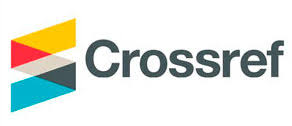ADVANCING DIGITAL MARKETING IN MOLDOVA: AN ANALYSIS BASED ON A SOCIOLOGICAL SURVEY OF ENTREPRENEURS
DOI:
https://doi.org/10.36004/nier.es.2023.1-07Keywords:
digital marketing, entrepreneurship, surveyAbstract
The article presents the results of the study on the implementation of digital marketing in Moldovan enterprises. Based on a sociological study conducted by the author in May-June 2023 among entrepreneurs (N=131), the level of digital marketing usage, current trends, awareness of digital marketing technologies and tools, as well as the difficulties encountered by entrepreneurs in using digital marketing tools, are identified. The data has been processed using multiple correspondence analysis (MCA) and Hierarchical Clustering on Principle Components (HCPC) in the programming language R. The research is descriptive in nature, as it aims to gather empirical information that provides a comprehensive understanding of the phenomenon under investigation and its structural elements.
Four clusters, each comprising enterprises of different sizes, were identified: 1) enterprises less advanced in digital marketing, 2) enterprises with complex marketing strategies but limited resources, 3) enterprises that combine traditional and digital marketing methods, 4) the most advanced enterprises in digital marketing. Marketing on social media holds a prominent position in the marketing activities of enterprises regardless of their size. SMEs face certain challenges in marketing activities overall and in the use of digital marketing tools, in particular.
Previous research on this topic is quite limited, and this current study is unique in that it considers the issue in the context of SMEs and Central and Eastern European countries. We show that SMEs, along with large companies, can have complex marketing strategies and successfully use modern digital marketing tools.
Downloads
References
Bachev, H. (2004). Governing of Marketing in Bulgarian Farms. Available at SSRN Electronic Journal. https://doi.org/10.2139/ssrn.903505
Barney, J. B. (1996). The resource-based theory of the firm. Organization science, 7(5), 469-469. https://doi.org/10.1287/orsc.7.5.469
Barrales-Molina, V., Martínez-López, F. J., & Gázquez-Abad, J. C. (2017). Dynamic Marketing Capabilities: An Integrative Framework Proposal to Absorb and Manage Market Knowledge. In Developments in Marketing Science: Proceedings of the Academy of Marketing Science (pp. 176–176). Developments in Marketing Science: Proceedings of the Academy of Marketing Science. https://doi.org/10.1007/978-3-319-50008-9_45
Becker, W., & Schmid, O. (2020). The right digital strategy for your business: an empirical analysis of the design and implementation of digital strategies in SMEs and LSEs. Business Research, 13, 985–1005. https://doi.org/10.1007/s40685-020-00124-y
Belas, J., Gavurova, B., Novotna, L., & Smrcka, L. (2022). Examination of differences in using marketing tools in the management of SMEs in the Visegrád Group countries. Amfiteatru Economic, 24(60), pp. 447-463. https://doi.org/10.24818/EA/2022/60/447
Bengtsson, M., Boter, H., & Vanyushyn, V. (2007). Integrating the Internet and Marketing Operations: A Study of Antecedents in Firms of Different Size. International Small Business Journal, 25(1), 27-48. https://doi.org/10.1177/0266242607071780
Bodlaj, M., & Rojšek, I. (2014). Marketing in Small Firms: The Case of Slovenia. Economic and Business Review, 16(2). https://doi.org/10.15458/2335-4216.1274
Bruni, D. S., & Verona, G. (2009). Dynamic marketing capabilities in science‐based firms: an exploratory investigation of the pharmaceutical industry. British Journal of management, 20, S101-S117. https://doi.org/10.1111/j.1467-8551.2008.00615.x
Canhoto, A. I., Quinton, S., Pera, R., Molinillo, S., & Simkin, L. (2021). Digital strategy aligning in SMEs: a dynamic capabilities perspective. The Journal of Strategic Information Systems, 30(3), 101682. https://doi.org/10.1016/j.jsis.2021.101682
Cenamor, J., Parida, V., & Wincent, J. (2019). How entrepreneurial SMEs compete through digital platforms: The roles of digital platform capability, network capability and ambidexterity. Journal of Business Research, 100, 196-206. https://doi.org/10.1016/j.jbusres.2019.03.035
Datareportal (2023) Digital 2023: Moldova https://datareportal.com/reports/digital-2023-moldova
Homburg, C., & Wielgos, D.M. (2022) The value relevance of digital marketing capabilities to firm performance. Journal of the Academy of Marketing Science, 50, 666–688. https://doi.org/10.1007/s11747-022-00858-7
Husson, F., Josse, J., & Pages, J. (2010). Principal component methods - Hierarchical clustering -Partitional clustering: why would we need to choose for visualizing data? Technical Report of the Applied Mathematics Department (Agrocampus) http://www.sthda.com/english/upload/hcpc_husson_josse.pdf
Husson, F., Josse, J., Le, S., & Mazet, J. (2023). Package FactoMineR [Computer software]. http://factominer.free.fr
Inayatulloh et al., (2023). The effect of using mobile applications, using social media, using E-Commerce, and having IT Knowledge on the performance of SMEs. International Conference on Information Management and Technology (ICIMTech), Malang, Indonesia, 2023, pp. 621-626, https://doi.org/10.1109/ICIMTech59029.2023.10277907
Josse, J., & Husson, F. (2016). missMDA: A package for handling missing values in vultivariate data analysis. Journal of Statistical Software, 70(1), 1–31. https://doi.org/10.18637/jss.v070.i01
Kim, K., & Lim, G.G. (2022). International Dynamic Marketing Capabilities of Emerging-Market Small Business on E-commerce. Preprints. https://doi.org/10.20944/preprints202110.0068.v2
Koh, K.-Y., Ahmad, S., Lee, J., Suh, G.-H., & Lee, C.-M. (2022). Hierarchical Clustering on Principal Components Analysis to Detect Clusters of Highly Pathogenic Avian Influenza Subtype H5N6 Epidemic across South Korean Poultry Farms. Symmetry, 14(3), 598. https://doi.org/10.3390/sym14030598
Kotler, P., Kartajaya, H., & Setiawan, I. (2017). Marketing 4.0. Moving from Traditional to Digital. Hoboken: John Willey & Sons.
Kwon, Y. (2021) Impacts of Dynamic Marketing Capabilities on Performance in Exporting. Open Journal of Business and Management, 9, 2119-2135. https://doi.org/10.4236/ojbm.2021.95112
McCartan, A. (2023). Marketing and performance in small firms: the role of networking. Journal of Research in Marketing and Entrepreneurship, 25(1), 150-182. https://doi.org/10.1108/JRME-01-2022-0007
Melović, B., Jocović, M., Dabić, M., Vulić, T. B., & Dudic, B. (2020). The impact of digital transformation and digital marketing on the brand promotion, positioning and electronic business in Montenegro. Technology in Society, 63, 101425. https://doi.org/10.1016/j.techsoc.2020.101425
Moen, Ø. (2000). SMEs and International Marketing: Investigating the Differences in Export Strategy Between Firms of Different Size. Journal of Global Marketing, 13(4), 7–28. https://doi.org/10.1300/J042v13n04_02
Nadanyiova, M., Majerova, J., & Gajanova, L. (2021). Digital marketing as a source of competitive advantage: case study of Slovak Republic. Marketing and Management of Innovations, 4, 92-103. https://doi.org/10.21272/mmi.2021.4-08
Nordin, N., Samsudin, M., & Yusoff, Y. (2023). Social Networking Using Social Media for Small Enterprises: Strategies, Challenges and Measure of Success. International Journal of Advanced Research in Economics and Finance, 5(1), 28-39. Retrieved from https://myjms.mohe.gov.my/index.php/ijaref/article/view/21652
NRA (2023) National Regulatory Agensy for Eelectronic Communication and Information Tehnology of the Republic of Moldova. Retrieved from https://en.anrceti.md/news_130922
Quinton, S., Canhoto, A., Molinillo, S., Pera, R., & Budhathoki, T. (2018). Conceptualising a digital orientation: antecedents of supporting SME performance in the digital economy. Journal of Strategic Marketing, 26(5), 427-439. https://doi.org/10.1080/0965254X.2016.1258004
Rizvanović, B., Zutshi, A., Grilo, A., & Nodehi, T. (2023). Linking the potentials of extended digital marketing impact and start-up growth: Developing a macro-dynamic framework of start-up growth drivers supported by digital marketing. Technological Forecasting and Social Change, 186(A), 122128. https://doi.org/10.1016/j.techfore.2022.122128
Saura, J. R., Palacios-Marqués, D., & Ribeiro-Soriano, D. (2023). Digital marketing in SMEs via data-driven strategies: Reviewing the current state of research. Journal of Small Business Management, 61(3), 1278-1313. https://doi.org/10.1080/00472778.2021.1955127
Setkute, J., & Dibb, S. (2022). “Old boys’ club”: Barriers to digital marketing in small B2B firms. Industrial Marketing Management, 102, 266–279. https://doi.org/10.1016/j.indmarman.2022.01.022
Taiminen, H. M., & Karjaluoto, H. (2015). The usage of digital marketing channels in SMEs. Journal of small business and enterprise development, 22(4), 633-651. https://doi.org/10.1108/JSBED-05-2013-0073
Teece, D. J., Pisano, G., & Shuen, A. (1997). Dynamic capabilities and strategic management. Strategic Management Journal, 18(7), 509-533. https://www.jstor.org/stable/3088148
Wernerfelt, B. (1984). A resource‐based view of the firm. Strategic Management Journal, 5(2), 171-180. http://www.jstor.org/stable/2486175















